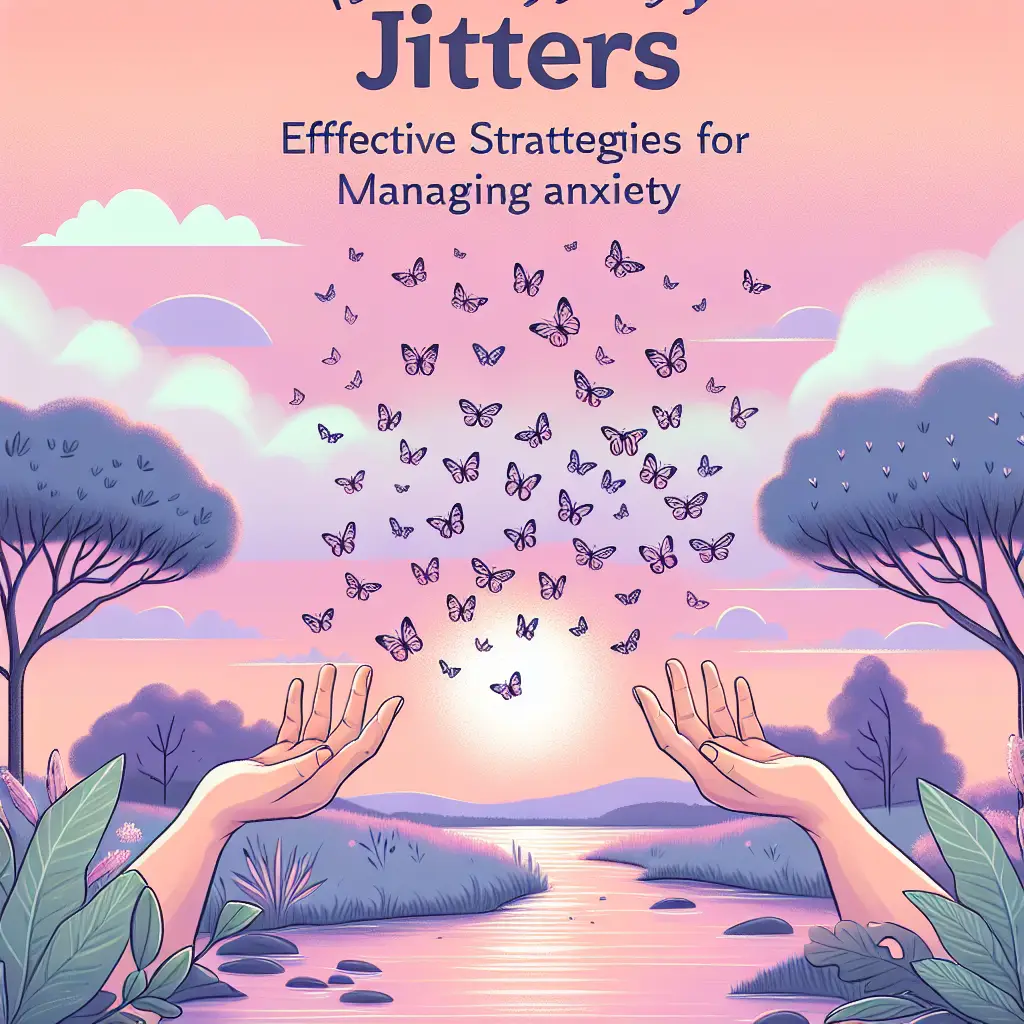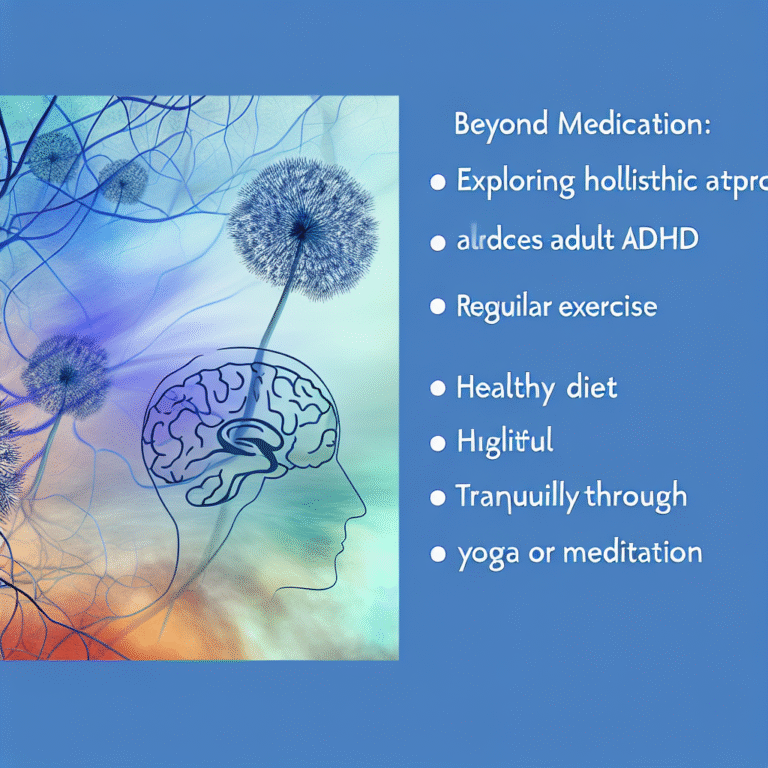
Taming Everyday Jitters: Essential Strategies for Managing Anxiety
Introduction
In a world filled with constant change and increasing demands, anxiety has become a common companion for many. Whether it’s the pressure of deadlines at work, the busy hustle of daily life, or personal expectations, inescapable jitters can creep in and take hold. Anxiety may often feel insurmountable; however, “Taming Everyday Jitters: Effective Strategies for Managing Anxiety” can empower you to reclaim your peace of mind. This article presents practical techniques and insights into mastering anxiety so that it no longer controls your life.
Understanding Everyday Anxiety
The Nature of Anxiety
Anxiety isn’t merely a buzzword; it’s an emotional response that everyone experiences at some point. Psychologically, it involves feelings of worry, nervousness, or apprehension about an upcoming event or situation. According to the Anxiety and Depression Association of America, anxiety disorders affect nearly 40 million adults in the U.S. alone. While a certain level of anxiety can actually promote motivation and focus, excessive anxiety can lead to debilitating effects on daily life.
The Science Behind Jitters
Understanding the physiological response to anxiety can be illuminating. When faced with stress, our bodies react by releasing hormones like adrenaline and cortisol—our body’s natural fight-or-flight response. The brain’s amygdala signals the potential threat, leading to physical symptoms such as increased heart rate, sweating, or even nausea. Knowing this, “Taming Everyday Jitters: Effective Strategies for Managing Anxiety” can become your toolkit for calming these bodily responses.
Effective Strategies for Managing Anxiety
1. Mindfulness and Meditation
Mindfulness is a powerful tool for regulating anxiety. It involves anchoring yourself in the present moment, steering your thoughts away from worries about the past or future.
Case Study: Emily’s Transformation
Emily, a 34-year-old teacher, struggled with anxiety triggered by her workload. Upon incorporating a daily mindfulness practice, she noticed a dramatic shift in her outlook. She devoted ten minutes each morning to guided meditation. The outcome was remarkable; Emily felt more grounded and less anxious throughout her day. Her experience encapsulates how “Taming Everyday Jitters: Effective Strategies for Managing Anxiety” can be achieved through simple yet effective practices.
2. Physical Activity
Engaging in regular physical activity is essential for mental well-being. Exercise releases endorphins—the body’s natural mood lifters, which can ameliorate feelings of anxiety.
Research Insights
A systematic review published in the Journal of Clinical Psychiatry found that individuals who exercised regularly reported significantly lower levels of anxiety. Aim for at least 150 minutes of moderate aerobic activity each week, such as brisk walking or cycling. This not only serves your physical health but is also a cornerstone of “Taming Everyday Jitters: Effective Strategies for Managing Anxiety.”
3. Cognitive Behavioral Techniques
Cognitive Behavioral Therapy (CBT) focuses on recognizing and changing negative thought patterns. By restructuring your thinking, you can lessen anxiety’s hold over you.
Table: Cognitive Distortions vs. Cognitive Restructuring
| Cognitive Distortion | Cognitive Restructuring |
|---|---|
| "I can’t handle this." | "I have faced challenges before and managed." |
| "If I fail, everything is over." | "Failure is a stepping stone to growth." |
| "Everyone will judge me." | "Most people are focused on their own issues." |
This table provides quick insights into shifting your mindset. Incorporating CBT principles into your daily life can be one of the most effective ways to engage in “Taming Everyday Jitters: Effective Strategies for Managing Anxiety.”
4. Healthy Lifestyle Habits
Maintaining a balanced diet and ensuring proper hydration can significantly impact your mood and anxiety levels.
Nutrition’s Role: A diet rich in fruits, vegetables, lean proteins, and whole grains provides the necessary nutrients for brain function. Omega-3 fatty acids, found in fish and flaxseeds, have been shown to help reduce anxiety symptoms.
- Sleep Hygiene: Quality sleep is critical for emotional regulation. Establishing a calming bedtime routine, limiting screen time, and creating a restful environment can help in getting better sleep quality.
5. Connecting with Others
Social support plays an invaluable role in alleviating anxiety. Engaging in conversations with friends, family, or support groups can drastically lessen feelings of isolation and fear.
Case Study: Mark’s Journey
Mark, a freelance graphic designer, felt overwhelmed by anxiety stemming from professional uncertainty. By joining a local artist collective, he found not only a network of support but also creative inspiration. His newfound connection fostered resilience against anxiety, demonstrating a prime example of “Taming Everyday Jitters: Effective Strategies for Managing Anxiety” through community engagement.
6. Breathing Techniques
One of the simplest yet underutilized methods for reducing anxiety is breath control. Practicing deep breathing exercises can immediately activate your body’s relaxation response.
Box Breathing Technique
- Inhale through your nose for a count of four.
- Hold your breath for a count of four.
- Exhale slowly through your mouth for a count of four.
- Hold again for a count of four.
- Repeat four to five cycles.
This method is particularly effective for those looking to manage immediate anxiety symptoms and can be a cornerstone in “Taming Everyday Jitters: Effective Strategies for Managing Anxiety.”
Bringing It All Together: Personalizing Your Approach
Everyone has unique stressors and responses to anxiety. Therefore, a combination of these strategies may work best. Creating a personalized action plan based on your preferences and daily routine can lead you toward successfully “Taming Everyday Jitters: Effective Strategies for Managing Anxiety.”
Creating Your Action Plan
Identify Your Triggers: A journal can serve as a useful tool for tracking situations that elevate your anxiety.
Select Strategies: Choose specific strategies that resonate with you, from mindfulness techniques to exercise routines.
Set Realistic Goals: Establish manageable goals to help you implement these techniques into your life gradually.
- Monitor Progress: Regularly review your progress and make adjustments to your plan as necessary.
Conclusion
Taming everyday jitters and effectively managing anxiety is a journey, not a destination. “Taming Everyday Jitters: Effective Strategies for Managing Anxiety” offers pathways to a calmer, more controlled life. By incorporating various approaches such as mindfulness, physical activity, CBT, proper nutrition, community engagement, and breathing techniques, anyone can achieve a greater level of tranquility.
Remember, it’s okay to ask for help when needed; consulting with a mental health professional can provide tailored strategies that resonate with your experiences. With perseverance and dedication, you can embrace life with confidence, joy, and reduced anxiety.
FAQs
1. What are common triggers for anxiety?
Common triggers include significant life changes, work stress, personal relationships, or even financial pressures. Identify your individual triggers to manage them effectively.
2. Can nutrition really impact my anxiety?
Yes, nutrition plays a crucial role in mental health. A balanced diet rich in nutrients can help improve mood and reduce anxiety symptoms.
3. How quickly can I expect results from practicing mindfulness?
Many people report feeling calmer and more centered within a few weeks of consistent practice. However, individual experiences may vary.
4. Is it normal to have anxiety?
Yes, anxiety is a normal emotional response. However, when it becomes overwhelming or disrupts daily life, it may be time to seek help.
5. What if none of these strategies work for me?
If your anxiety persists despite trying various strategies, consulting with a mental health professional can provide further customization of your coping techniques.
By adopting these insights from “Taming Everyday Jitters: Effective Strategies for Managing Anxiety,” you’re taking a significant step toward understanding and managing your anxieties, enhancing both your well-being and quality of life.















